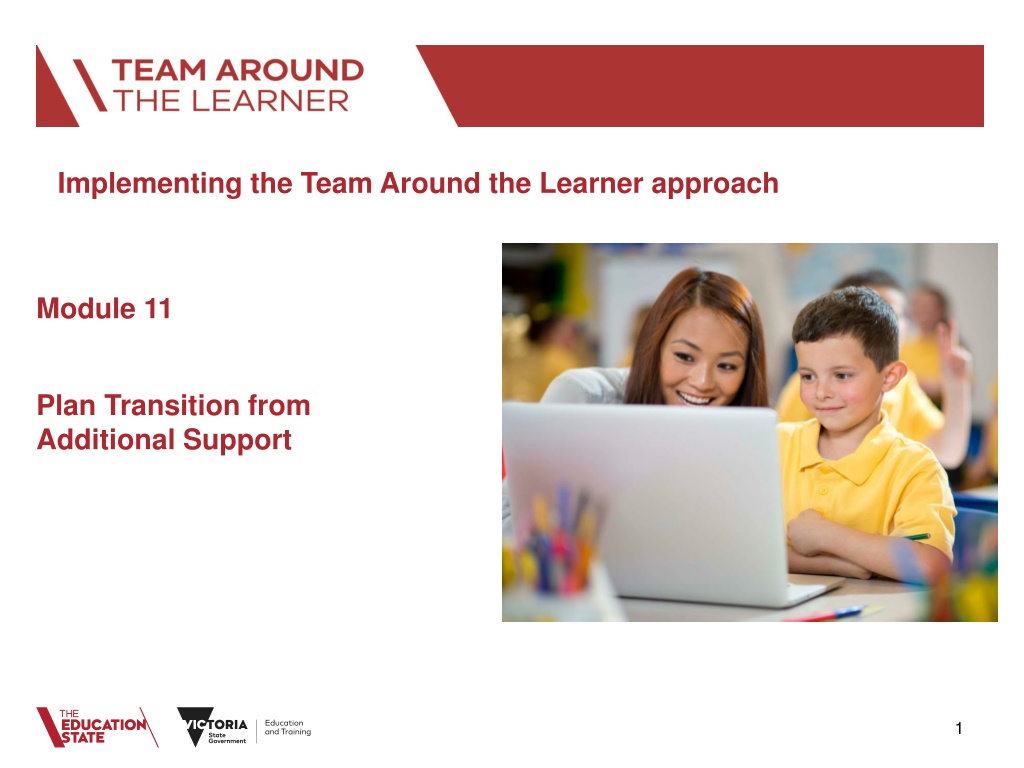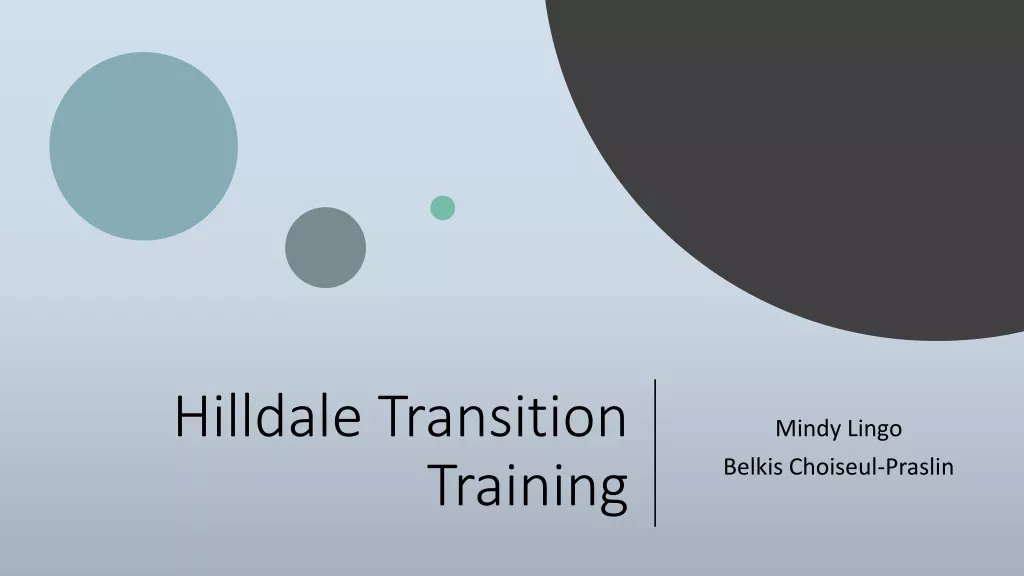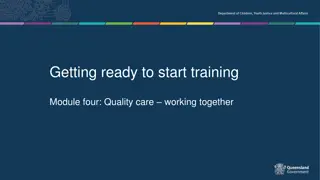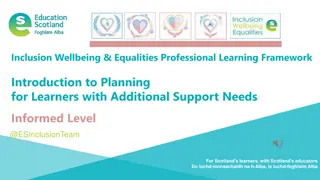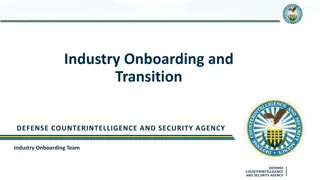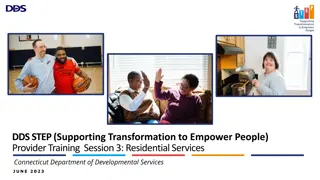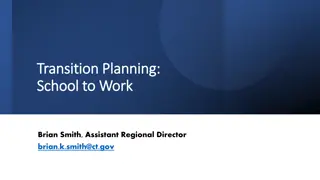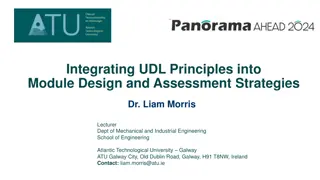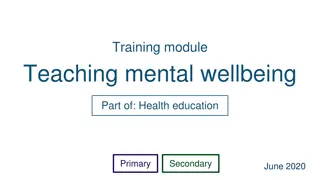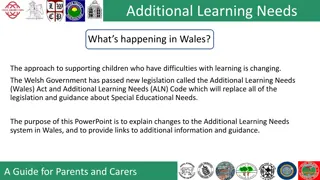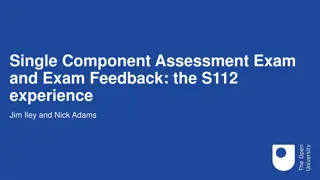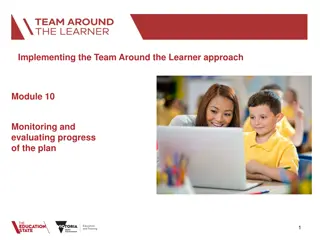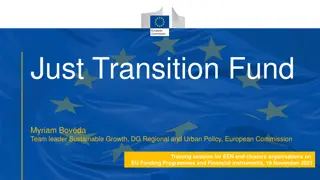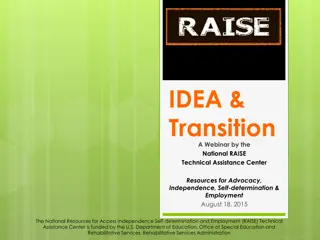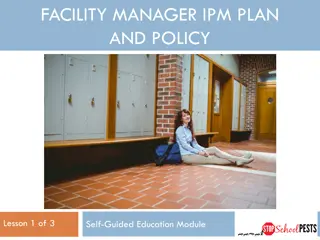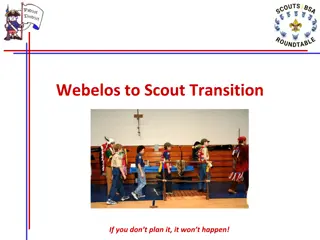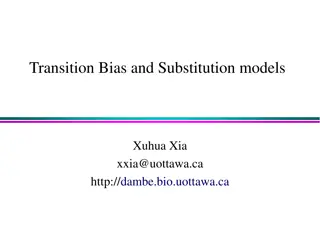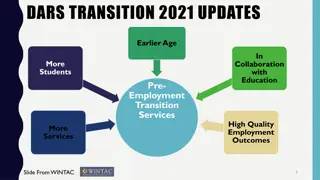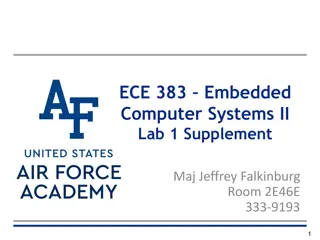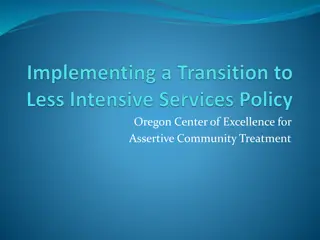Transition from Additional Support: Module 11 Overview & Plan
Module 11 focuses on planning the transition from additional support for learners and families. It covers recognizing when to plan the transition, developing transition plans, celebrating successes, and following up with the learner and family to ensure continued success. The process involves initiating contact, planning the transition, monitoring and evaluating needs, and coordinating support activities. The goal is to shift from formalized support to natural supports while ensuring ongoing success for the learner and family.
Download Presentation

Please find below an Image/Link to download the presentation.
The content on the website is provided AS IS for your information and personal use only. It may not be sold, licensed, or shared on other websites without obtaining consent from the author.If you encounter any issues during the download, it is possible that the publisher has removed the file from their server.
You are allowed to download the files provided on this website for personal or commercial use, subject to the condition that they are used lawfully. All files are the property of their respective owners.
The content on the website is provided AS IS for your information and personal use only. It may not be sold, licensed, or shared on other websites without obtaining consent from the author.
E N D
Presentation Transcript
Implementing the Team Around the Learner approach Module 11 Plan Transition from Additional Support 1
Module 11: Planning Transition from Additional Support Overview The aim of this module is for the team to identify when to plan the transition from additional supports for the learner and family. This module outlines how to develop the Transition from Additional Support Plan. The module will also discuss the importance of celebrating successes with the learner, family and team, and how to check in with the learner and family to ensure continued success. Focus This module will support your ability to: 11 Plan Transition from Additional Support Recognising when to plan transition Developing a transition from additional supports plan Celebrating success Following up with the learner and family 2
Initiate Contact Plan Transition Recognising when to plan transition Monitor & Evaluate Analyse Needs Plans are made for a purposeful transition from the formalised Team Around the Learner approach to reengagement in natural supports. Plan & Coordinate This phase is entered once it has been agreed by the learner, family and team that the goals outlined in the plan have been achieved and sustained. A Transition from Additional Support Plan is created taking into consideration the need for post-transition planning. The Team Around the Learner process is formally concluded with a celebration of the achievements of the learner, family and team. Resources Transition from Additional Support Plan 3
Initiate Contact Plan Transition Recognising when to plan transition Monitor & Evaluate Analyse Needs By this stage the learner and family will be equipped with the knowledge and coping skills to manage situations as they arise and feel that their needs have been met. Plan & Coordinate The activities of this phase have no defined timeline. At this stage, the learner and family are confident to contact the appropriate supports if required. The learner and family should be followed up to ensure that they are continuing to experience success after the Team Around the Learner process concludes. The Lead Professional should provide support if it becomes necessary again. It is acknowledged that crises and other events that occur in the learner s life may flag a need for an increased level of support. At these times the Team Around the Learner approach may need to be reinstated to support the learner. 4
Recognising when to plan transition Preparation for the transition process commences well before the actual phase begins and intensifies as the team moves closer to achieving all the goals and needs of the learner. During the implementation of the plan, the Lead Professional and team are continuously monitoring and evaluating the success of the strategies and the goals being achieved. At this time, they are also carefully monitoring if the learner and family are: learning new skills to cope with and manage their needs gaining knowledge of how to access supports and services building and using their strengths sustaining the outcomes achieved along the way. Strategies were successful Goals have been achieved Once it has been agreed during the Monitor & Evaluate phase that all goals have been achieved and the needs of the learner have been met, the team should come together to discuss the development of a Transition from Additional Support Plan. The Lead Professional should schedule a meeting with the team to review the outcomes of the learner. It is important to ask the learner and family how comfortable they are to move into the Plan Transition phase and feel they are capable of supporting themselves. Needs have been met 5
Developing a Transition from Additional Support Plan Planning the transition will involve the development of a Transition from Additional Support Plan with the learner, family and team. Resource Transition from Additional Support Plan 6
Celebrating success The transition should be celebrated as a team in recognition of the journey everyone has travelled together and the success that has been achieved . The Lead Professional should encourage the team to celebrate the transition in a culturally appropriate manner that: is meaningful to the learner, family and team recognises accomplishments highlights the journey that has been travelled together It is important this step does not feel like it is simply part of the process but a genuine celebration of success 7
Following-up with the learner and family The Lead Professional should lead the team in establishing a procedure for periodically following up with the learner and family during the transition phase. Check-ins should be intermittent and should have an end point depending on how the learner and family are progressing post Team Around the Learner. If, during these follow-ups, new needs have emerged to the degree that a Team Around the Learner would be required, the Lead Professional should make the appropriate arrangements and reconvene the team. Intervention may not need to be as formal as beginning a Team Around the Learner process and the Lead Professional may guide the learner and family to other appropriate services and supports that could meet their needs. The learner and family should always feel that they know who they can go to for support, guidance or assistance and feel comfortable to do so. Depending on the team involved in the Team Around the Learner and the Transition from Additional Support Plan, check-ins can be part of existing school, family and learner conversations. The learning mentor* plays a major role in monitoring the ongoing wellbeing and learning direction of the learner. The Lead Professional should provide support where necessary. It is acknowledged that crises and other events that occur in the learner s life may flag a need for an increased level of support. At these times immediate supports need to be put in place and the team reconvened to support the learner. 8
